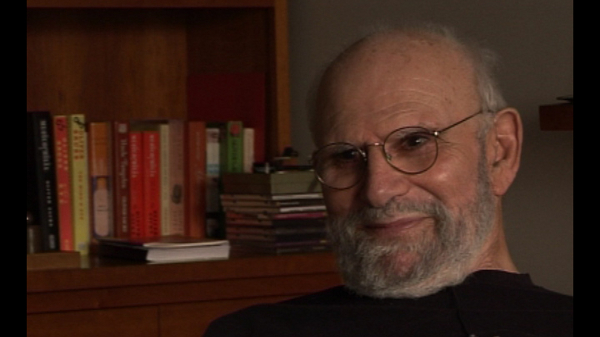NEXT STORY

Joining my mother on her house calls
RELATED STORIES

NEXT STORY

Joining my mother on her house calls
RELATED STORIES


|
Views | Duration | |
|---|---|---|---|
| 21. Loving the rituals of Judaism | 835 | 01:26 | |
| 22. Personal and universal Judaism | 738 | 01:28 | |
| 23. 'I was supposed to be a girl' | 1 | 771 | 00:39 |
| 24. 'The house was full of music' | 654 | 01:29 | |
| 25. Loving my father's job as a doctor | 635 | 01:30 | |
| 26. My father's love for music | 660 | 00:42 | |
| 27. My rather un-musical mother | 584 | 00:39 | |
| 28. The sights, smells and sounds of my parents' surgery | 574 | 03:08 | |
| 29. Bursting in on my parents' surgery | 554 | 00:39 | |
| 30. Discovering my mother's cranioclast | 593 | 01:47 |


I have another memory of pulling out an instrument which she had in the instrument cupboard. It was like a powerful pair of callipers and I said, 'What’s this, what are these?' And she said, ‘That’s a cranioclast’. And I said, 'What’s a cranioclast?' And she said, that sometimes a woman would start giving birth, but the baby’s head would be too large to go through and would stick, and at that point one might have to use a cranioclast to crush the baby’s head. She said, 'But at least', she said, 'this may sound awful, but if you don’t use this, then you will lose mother as well as child'. I don’t know why the cranioclast stays in my mind. I think, but I may be wrong, I think, she told me that an orthodox Catholic would not use a cranioclast and would sacrifice mother and child, but... but perhaps I’m making that up.
[Q] I’ve also heard that, because it’s more important, in that notion, to birth the child and baptise it, even if it’s going to die. Yes.
Yes. Well, I mean, I don’t know how you’d get the child out.
Oliver Sacks (1933-2015) was born in England. Having obtained his medical degree at Oxford University, he moved to the USA. There he worked as a consultant neurologist at Beth Abraham Hospital where in 1966, he encountered a group of survivors of the global sleepy sickness of 1916-1927. Sacks treated these patients with the then-experimental drug L-Dopa producing astounding results which he described in his book Awakenings. Further cases of neurological disorders were described by Sacks with exceptional sympathy in another major book entitled The Man Who Mistook His Wife For A Hat which became an instant best seller on its publication in 1985. His other books drew on his rich experiences as a neurologist gleaned over almost five decades of professional practice. Sacks's work was recognized by prestigious institutions which awarded him numerous honours and prizes. These included the Lewis Thomas Prize given by Rockefeller University, which recognizes the scientist as poet. He was an honorary fellow of both the American Academy of Arts and Letters and the American Academy of Arts and Sciences, and held honorary degrees from many universities, including Oxford, the Karolinska Institute, Georgetown, Bard, Gallaudet, Tufts, and the Catholic University of Peru.
Title: Discovering my mother's cranioclast
Listeners: Kate Edgar
Kate Edgar, previously Managing Editor at the Summit Books division of Simon and Schuster, began working with Oliver Sacks in 1983. She has served as editor and researcher on all of his books, and has been closely involved with various films and adaptations based on his work. As friend, assistant, and collaborator, she has accompanied Dr Sacks on many adventures around the world, clinical and otherwise.
Tags: cranioclast, birth, Catholic, baptism
Duration: 1 minute, 47 seconds
Date story recorded: 19-23 September, 2011
Date story went live: 02 October 2012